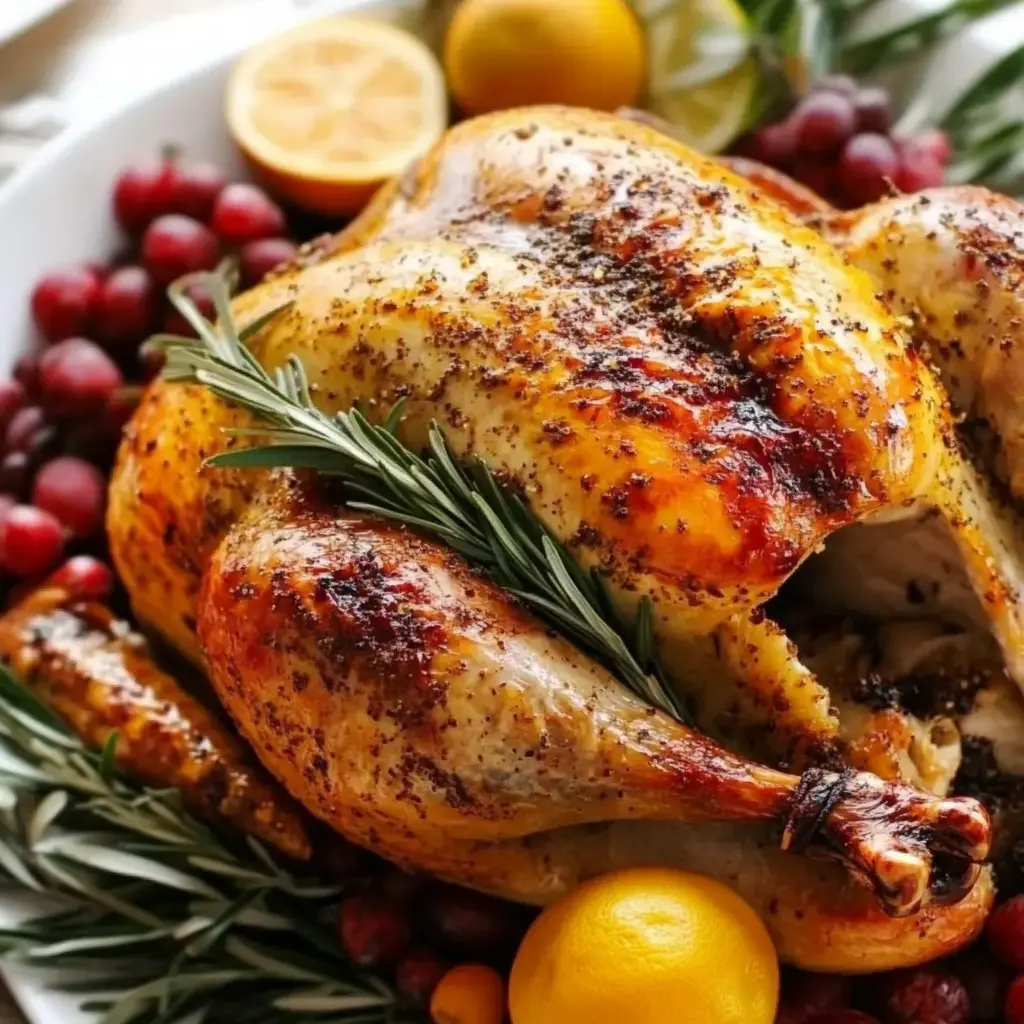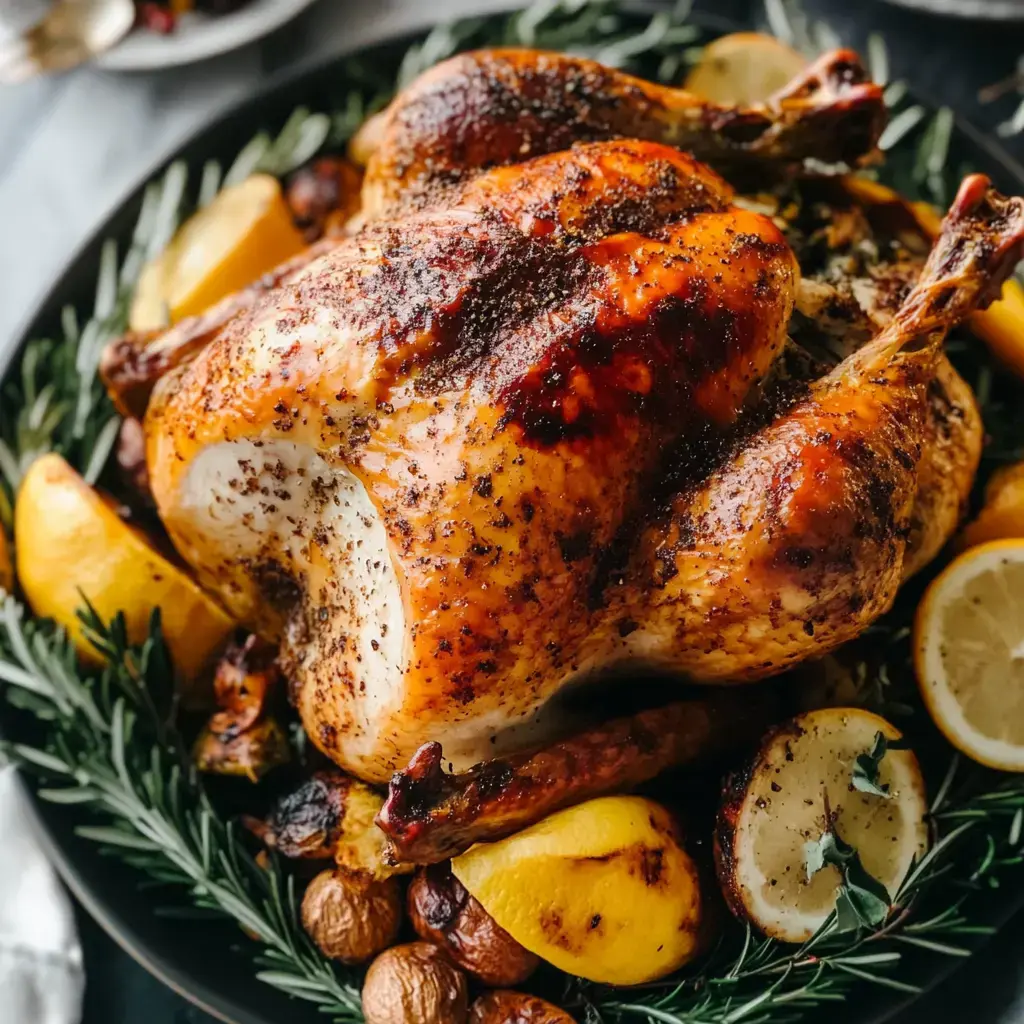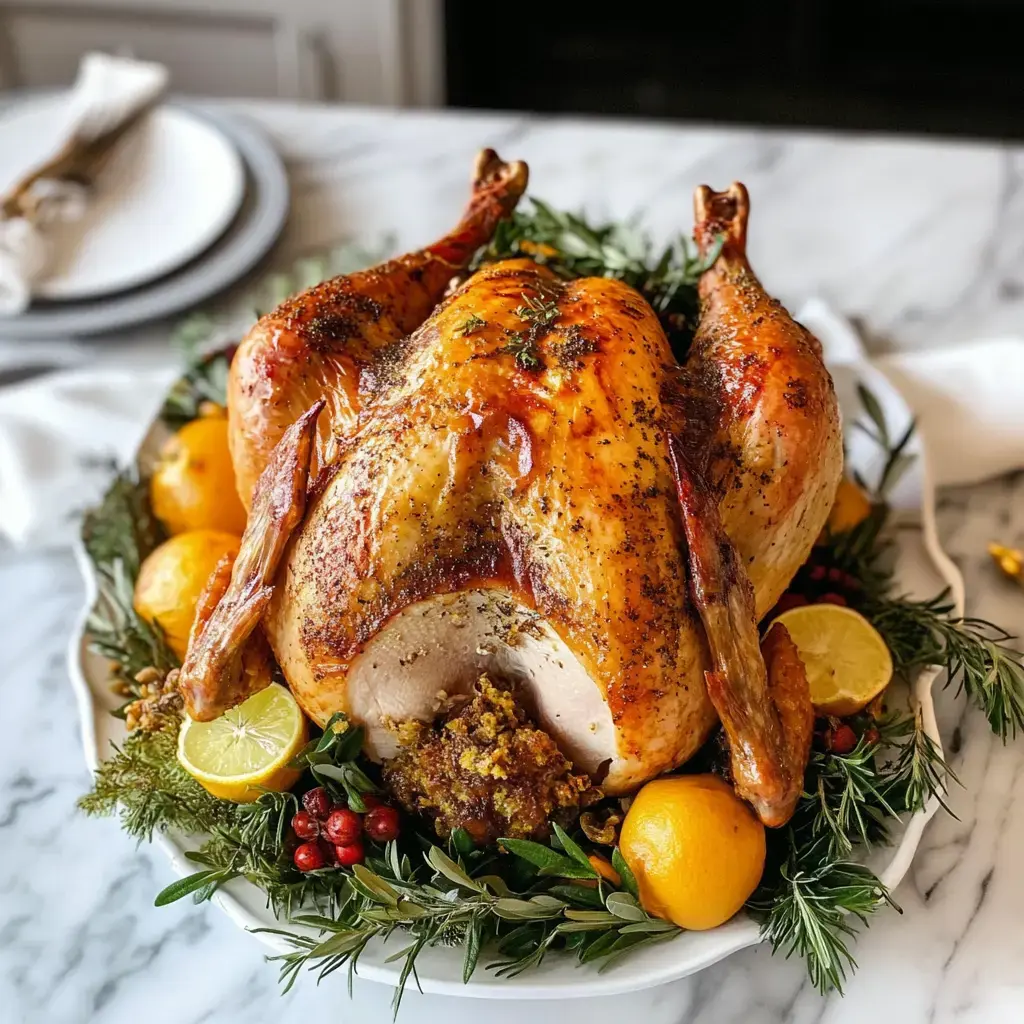 Pin it
Pin it
Skip the hassle and go for this easy method. Whether you're brand new to cooking or have roasted a bird before, you'll get a juicy, golden turkey with hardly any effort. Cozy herb butter and keeping an eye on the oven temp makes sure your turkey (anywhere from 12-18 pounds) comes out just right every single time.
Why It’s Awesome
If you find cooking turkey stressful, these steps make it a breeze. Herb butter keeps everything moist—no need to keep basting. Straightforward temp advice means you’re not guessing. You just need three common tools: a sharp knife, meat thermometer, and a rack. These steps don’t let you down, whether you have a small crew or the whole gang.
What You’ll Gather
- Optional veggies: 2 carrots (chopped), 3 celery sticks (cut up), and 1 onion (quartered) to throw in the pan
- Seasonings: Add kosher salt and pepper to the herb butter and inside the turkey
- Butter rub mix: 6 minced garlic cloves, 3/4 cup softened butter, a spoonful each of chopped rosemary and thyme
- To flavor the inside: 2 sprigs each sage, thyme, rosemary, plus 1 quartered lemon and 1 quartered onion
- Turkey: Get a 12-18 lb turkey, thawed if frozen, and let it come to room temp
Simple Directions
- Final Touches
- Before slicing, give your turkey a 30-minute nap to relax. Double-check it hit 165°F. Carve it up and serve before it gets cold.
- Into the Oven
- Rest your turkey on a bed of veggies or a rack. Bake about 15 minutes a pound until your thermometer says 160°F in the thickest part. If the skin's browning too fast, lay some foil over the top.
- Cover in Butter
- Slide a bit under the skin (try not to tear it), then use the rest on the outside until it's all coated.
- Get it Ready
- Open up the cavity and season well. Drop in the onion, herbs, and lemon chunks. Blend your herb butter: garlic, more herbs, salt, pepper, and softened butter until nice and smooth.
- Prep Time
- Set your oven to 325°F. Take the turkey out of the fridge an hour ahead. Pull out the giblets and use paper towels to dry the bird.
Thawing Tips
You’ll want to let that turkey thaw longer than you think. Set it in the fridge, one day for every five pounds. Got a 15-pounder? Start three days out. Pop it on a tray at the bottom of the fridge, still wrapped, so any drips get caught. Don’t thaw turkey on the counter or you could get sick. In a hurry? Use a cold water bath, swapping the water every half hour until it’s thawed.
 Pin it
Pin it
Ditch the Rinse
Forget rinsing your turkey—just makes a splashy mess and isn’t needed. The roasting heat gets rid of the germs, washing just spreads them. Pat it dry with paper towels for crispier skin and less cleanup. Always wash your hands and don’t mix cutting boards after touching raw turkey.
Stuff Outside the Bird
Skip shoving stuffing inside. Bake it on its own for better texture and less hassle. Fill the turkey with lemon, onions, and herbs instead; this way everything cooks evenly and tastes great. You get a nicely browned stuffing top, plus your turkey’s done quicker.
Getting That Crunchy Skin
To lock in that beautiful, crispy skin, dry your turkey out well. Let it sit in the fridge uncovered a couple hours or overnight. When you’re ready to cook, slather the herb butter everywhere. Try not to keep opening the oven—the temperature drops with each peek and slows things down. The butter does the work, so you don’t have to baste.
 Pin it
Pin it
Give It a Break
Once it’s done cooking, your turkey needs a good half-hour to rest. For really big birds, even up to an hour is perfect. This keeps all that juice inside—slice it too soon, and you’ll end up with dry meat. Tent with foil, and use the wait to whip up gravy, heat the sides, or call everyone in. Trust me, it’s worth it for that moist turkey.
Frequently Asked Questions
- → Can I prep herb butter early?
You bet! Make it 2 days before. Just let it soften before slathering. Keep tightly wrapped in the fridge or even freeze weeks ahead. If you're using citrus zest, fresh zest on the day makes a big difference.
- → What if fresh herbs aren't handy?
Dried ones work too, at about 1/3 the amount of fresh. Mix them into butter to bring out their flavor. Fresh is best, but dried gets the job done. Stick with herbs that dry well, like rosemary or thyme. Basil dries less effectively.
- → How do I check if it's cooked?
Use a thermometer. The thigh should read around 158–160°F, avoiding the bone for an accurate measure. Check multiple spots. Dark meat takes longer than white. Rest it till 165°F—it’ll stay juicy this way. Don’t just trust the color!
- → Is stuffing the bird a good idea?
Not really! Cook it separately for safe and even cooking. You can load the cavity with lemon, onions, and herbs for flavor. Stuffing in the pan gets crispy on top too. It also cuts down cooking time.
- → How long should it rest?
At least 30 minutes, or even better, 45. This locks in the juices. Cover it lightly with foil—keeps it warm without steaming. Use the time to finish side dishes or make gravy. Cutting too soon just drains the juices, so resist the urge!
Conclusion
If easy meals are your thing, try herb roasted chicken next. Pair with bright lemony veggies or creamy garlic mashed potatoes—same simple, comforting flavors go a long way.
